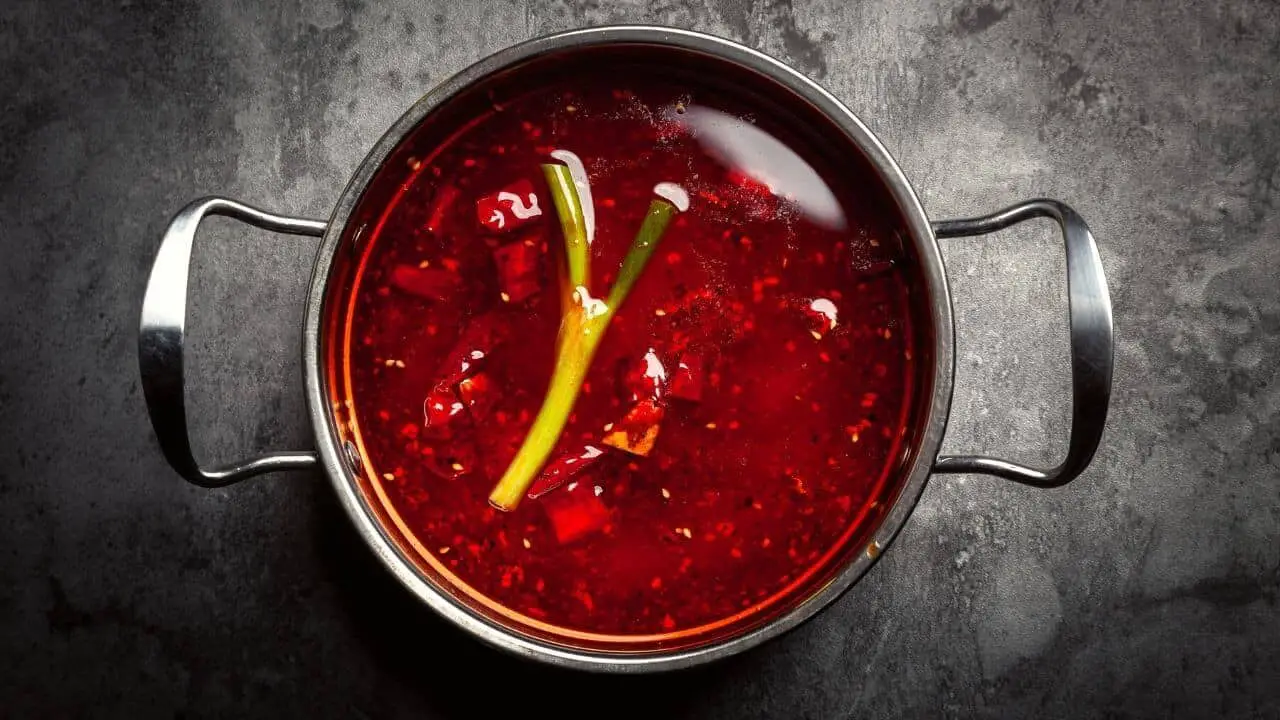Last Updated on May 19, 2023 by River Tree Farms
If you enjoy cooking and trying new recipes, you have probably come across recipes requiring a heavy bottom pan. You have probably asked the question, ‘what is a heavy bottom pan?’ ‘Why is it important?’ Heavy-bottomed pots and pans have thick baes. Therefore, they can absorb a lot of heat from the heat source and distribute it evenly.
Thin-bottomed pans may not be appropriate for certain recipes as they are prone to ‘hot spots.’ They heat up fast and may be inappropriate for certain recipes. Your heavy bottom pot is perfect for heating dairy and cooking sugar. A heavy-bottomed saucepan is ideal for cooking custards and delicate sauces.
What Are Heavy-Bottomed Saucepans?
The main distinguishing factor about heavy-bottomed saucepans is that their bases are thicker than the bases of other saucepans. How thick should the pan be? There is no specific answer. However, the base of your saucepan has to be visibly thicker than its sides.
While a thicker base might not seem significant, it can improve your cooking. The biggest benefit of thick bases is that they absorb and distribute heat more evenly than thin-bottomed saucepans. A thinner base saucepan leaves increases your likelihood of getting kitchen accidents.
Are Dutch Ovens Heavy Bottom Pots?
A Dutch oven is a cookware type that serves various functions in the kitchen. The sides and bottom are thick. The pans also have tight-fitting lids to seal in moisture and flavor. The versatility of these pans makes them great for slow-cooking soups, roasting meat, simmering sauces, and more.
Dutch ovens are heavy-bottom pots. Their thick bottom retains heat and prevents hot spots. The heavy, tight-fitting lid seals in moisture and helps your food cook fast.
Can You Use a heavy-bottomed Pan for All Recipes?
If you are like most cooks, you have probably considered using a heavy-bottomed pan for everything. The pans distribute heat evenly, which is perfect for various cooking tasks.
You can use your heavy-bottom saucepan or pan for most of your recipes. It reduces the likelihood of burning food and other cooking accidents. The pans can be convenient when handling delicate cooking tasks. You can upgrade to other pans as you get better in the kitchen.
The Benefits of Using a Heavy-Bottomed Saucepan
A heavy-bottomed piece of cookware comes in handy in a wide range of cooking tasks. The biggest benefit of these pans is that they can work for almost any recipe. If a recipe calls for the use of a heavy-bottom pan, it is mostly because there is a need for heating something that splits or burns easily. Such pans are excellent for cooking sugar and heating dairy products.
Heavy-bottomed pans are usually compatible with induction hobs. The bottom is typically made with metal that completes the magnetic circuit you need while cooking with induction. A heavy base will work great on any induction hob. You get to kill two birds with one stone.
Which Pans Get Hottest?
Carbon steel, cast iron, and stainless steel are fantastic for cooking at high temperatures. However, every material has its advantages and disadvantages. If your biggest priority is heat retention, cast iron is your best choice. It heats up slowly and holds heat pretty well. Stainless steel is easy to clean and maintain, and carbon steel strikes a middle ground.
Cast aluminum is lightweight, so it heats up pretty fast. Its most significant disadvantage is that it doesn’t hold heat very well. However, it is cheaper than cast iron.
Heavier cast iron pans are better than lightweight options. They are reliable, durable, and versatile. A well-maintained cast iron pan lasts a lifetime because of its high capacity to tolerate heat.
What Are the Best Pans for Deep Frying?
The best pan to deep fry foods is about three inches deep. It can hold about five cups of oil and some food without spilling over. Consider using a cast-iron Dutch oven for your frying needs. The ovens are deep and heavy.
When deep-frying your food, you’d be wise to keep the lid down. Deep frying with the lid on can create condensation. It steams your food and drips into your oil. Therefore, deep frying foods with the lid on beats the purpose. If you need your foods to fry fast, cook them in small batches.
Can You Use Nonstick Pans Over High Heat?
Several pans work great over high heat. However, nonstick options are generally recommended for low to medium heat. High heat burns them and might lead to the release of harmful chemicals and smells.
Are Cast Iron Pans Better than Non-Stick Pans?
If you like trying out recipes under high heat, cast iron pans are better than non-stick options. The Teflon on non-stick pans can cause serious issues when heated at 500°F (260°C) or above.
Is Stainless Steel a Heavy Bottom Pan?
Your saucepan can be made with thick stainless steel material. Therefore, some stainless steel pans are heavy bottoms. They are ideal for cooking rice, making oatmeal, and egg-based custards.
What Is a Capsulated Bottom?
The term ‘encapsulated’ refers to a component that has been enveloped or encased by an additional covering. Regarding cookware, a layer of aluminum is usually encapsulated with materials like copper or stainless steel. The aluminum is sandwiched between steel layers.
Conclusion
What is a heavy bottom pan? It is a regular pan whose bottom is thick enough to absorb and distribute heat evenly. The heavier a pan is, the more mass it has. When a heavy-bottomed pan is hot, it stays hot even when cool ingredients are added. There is a minimal ‘recovery time’ when cold ingredients are added. There are no hot spots, so your food won’t burn quickly.
Cookware with thin bottoms is cheap, and it burns quickly. It is likely to burn your food and cause other kitchen accidents especially when you are new to cooking. Whether you wish to cook rice, heat some milk, boil your oatmeal, or simmer a thick sauce, a heavy-bottomed pan is a better choice than a thin-bottomed one.

